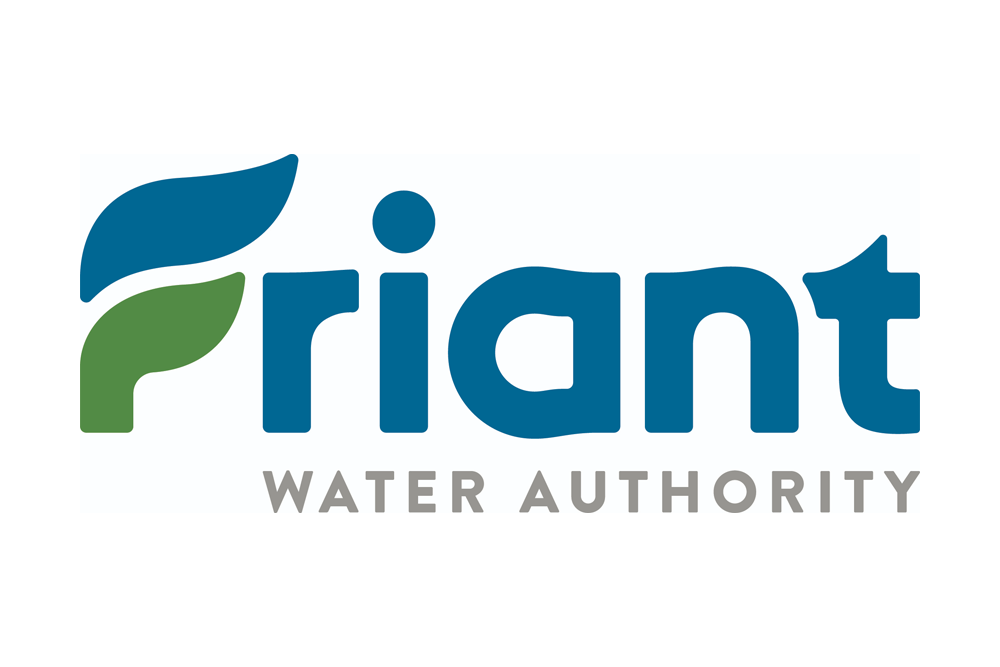The Water Blueprint for the San Joaquin Valley held a meeting at the WET Center on the Fresno State University campus, Water Energy, Technology. The meeting of the Education Fund and Advocacy Fund boards also took place online with Zoom and in person on Wednesday, July 16, 2025 with a scheduled 9:00am start. Chairman Eddie Ocampo called it on the dot and roll was taken. Perhaps the doldrums of summer, perhaps the smaller size of the room and it was packed, but the online presence was bigger than usual.
The Meeting
After roll the agenda was approved and Kassy Chauhan gave the treasurer’s report. She said the finance committee met last week and reviewed the report. Also the Blueprint has been vetted you might say by the Franchise Tax Board.
Legislation
J. Scott Petersen gave the legislative report saying the committee wasn’t able to meet but the timing made it necessary to bring up HR 3845 Congressman Adam Gray’s Valley Water Protection Act that will create some exemptions to the Endangered Species Act if ESA compliance would be a threat to national security or pose significant adverse national or regional economic impacts.
HR 1897, Bruce Westerman would amend the ESA to require the creation of a prioritization framework for a five-tiered listing of species. Each tier would be tied to the regulatory intensity and the related actions. It will also deal with the bias of the Ninth Circuit Court and create a standard throughout the nation.
Vice chair Geoff Vanden Heuvel commented the ESA is now more than 50 years old. Not only the ESA but the Clean Air Act and other bills were passed in response to more than 100-years of economic growth and industrialization in America since the Civil War. Turns out we actually know more now about species recovery and its impact on economics since 1973. He and others strongly supported both of the federal bills presented.
On the state side Beth Olhasso gave the analysis of AB 1413 Diane Papan supported by those who believe it is better to seek adjudication than SGMA implementation. Safe verses sustainable yield is the issue. Papan, a Bay Area Democrat, chairs the Water, Parks & Wildlife committee in the Assembly. She started out her chairmanship giving hope to those in California not attached to the enviro/social “justice” mindset. I’m sorry to report she’s put forth some bad bills. Papan is the one who authored the piece of political theater that would bring criminal charges against the operators of federal dams, such as the Army Corps of Engineers or US Bureau of Reclamation employees for releasing water.
Wildlife committee in the Assembly. She started out her chairmanship giving hope to those in California not attached to the enviro/social “justice” mindset. I’m sorry to report she’s put forth some bad bills. Papan is the one who authored the piece of political theater that would bring criminal charges against the operators of federal dams, such as the Army Corps of Engineers or US Bureau of Reclamation employees for releasing water.
This latest bill, AB 1413 is opposed by Western Growers, ACWA and a host of ag interests. This is because of the messy opportunity to use SGMA to under cut water rights and doesn’t allow for the evolving GSPs.
The recommendation is to oppose unless amended. Director Jason Gianelli (who’s from Kern County) said much of this is from situations in Kern County and the Supervisor from the eastern side of the county. He said it’s a bad bill. Director Dianna Jackson said as a manager of a Groundwater Sustainability Agency (Tri County if you’re wondering) said she can’t support this bill. Chauhan (manages North Kings GSA) remarked Papan’s willingness to amend this bill is reportedly nil.
Investigating Groundwater
Interim Executive Director Austin Ewell introduced Bill Swanson of Stantec Engineering. Swanson explained Metropolitan Water District is seeking to store more water supplies in San Joaquin Valley water banks. The Blueprint and Met signed a Memo of Understanding to carry this out. As Swanson mentioned, with the Southern California fires, both external and internal distracting Met, the water recharge in the Valley hasn’t been at front of mind.
However, Stantec has begun developing a nine-month plan to identify potential banking locations and needed infrastructure. This will be done in coordination with both Met and the Blueprint. There are many facets to this task. Many of them have been covered with other banking programs but they still need to be considered for each location. Who owns the land? How much if any leave behind is agreeable? What is the overall water quality? These are just a few of the details that must be considered beyond just the obvious criteria of cost and funding.
land? How much if any leave behind is agreeable? What is the overall water quality? These are just a few of the details that must be considered beyond just the obvious criteria of cost and funding.
Ewell said Met and the Blueprint want seats on the committee overseeing this plan development. Neither the Blueprint or Met have land and infrastructure at this time. Chauhan asked if the several banking projects underway will be considered in this plan.
Swanson said he’s not proposing evaluating all the projects but rather look at them as possible guides to new projects. I believe he was saying soil sampling and other verifiable data from these existing project studies could be used.
Petersen asked if there is a geographic boundary for the plan and Swanson said there is nothing carved in stone but it sounded like from Merced County south. Ewell said Santa Clara Valley Water District is aware of the Blueprint/Met MOU and while there needs to be an eye out for redundancy and avoidable objections there are also increased opportunities for collaboration.
Who’s going to be representing the Blueprint on this planning committee? Well, to start with Dr. Scott Hamilton, Chair of the Blueprint Technical Committee. But also folks with banking development and those with stakeholder interests in the various locations under consideration.
Swanson and Stantec are good guys but they can’t put this plan together for free. Petersen dove into the subject by asking, who’s paying? Ewell said that’s up for discussion. Take a look at the budget estimate from Stantec and you’ll see the figure of $238,820.
Vanden Heuvel, who comes from Southern California, said the view from So Cal is the SJV is a massive area. The Blueprint needs to step up and help to guide the process of what will be a very beneficial outcome for both the Valley and Southern California. Ewell stressed Met wants to be the best neighbor to the Valley it can be. Jackson said she wants to be sure the areas of the Valley in the worst shape for water supplies should be considered even if out of the box.
Eric Tsai, from DWR said they are studying five recharge areas north of the San Joaquin River and is interested in how this could complement the Blue/Met MOU. He also used the word equity, as in, bringing “equity”. He didn’t explain, nor should he have had to do so. But, I’ve long railed against the use of that word in the context of Critical Theory ala State Board, so that catches my ear when said. On this note having DWR’s interest and support is great news. Although there are places in the Valley with much worse water problems than the San Joaquin River tributaries Tsai mentioned in the study.
John Basilla called in with a comment to include forest management as a component to increase natural runoff supplies and he believed that will help Met sell these projects to its ratepayers.
The Unified Water Plan
Next Swanson presented the committee with a pretty good deal. Stantec is willing to extend the Unified Water Plan at no additional cost. Also, Stantec needs more time to complete its work.
Swanson spoke about the interaction of conveyance, storage, flood and environmental considerations in developing the Unified Plan. He had a chart outlining these matters that started with 16 panels of text (and grew during his presentation) listing what the range of projects could include.
Jorene Downs called in to ask if there is more need for injection wells as the soil gets saturated during floods. Swanson said this is something to be considered. Jeff Payne from Westlands WD had spoken earlier in the meeting about some injection in its recharge efforts. Swanson agreed this is a viable component.
Next Swanson said the thing that hasn’t been discussed yet is the Unified Plan shouldn’t single out say, four, projects. He said there should be a group of potential portfolios to take a more efficient path to increasing supplies – with complimentary benefits. There is a risk the Groundwater Sustainability Plans will be infeasible when taken in total. There may not be enough existing supplies or the amount of fallowed acreage is greater than expected there needs to be a fallback plan.
As each portfolio is addressed opportunities for other portfolios can be addressed in turn. Swanson said this is a first draft proposal and he sees plenty of room for improvement. Vanden Heuvel said having the Unified Plan laid out in a logical manner is a great start and we need to be brought before the state and federal decision makers.
Hamilton has been working extensively with Stantec on this plan. He said this is looking at a subbasin by subbasin supply and how recharge and other supplies will reduce the gap. This isn’t about studying individual projects in each subbasin – it’s about looking at the entire Valley’s needs.
Vanden Heuvel reiterated his position this plan needs to be widely circulated as soon as possible. He asked when this plan will be ready for release. Hamilton said the band width of the GSAs is still tight. He said the water supply and conveyance portion should be ready in a week or two with flood analysis close behind. There is a great deal of value to this project and he sees the need to get it finished. But the likely draft completion will be in about four months. Swanson said one of the challenges has been defining the parameters of what needs to be included and what can reasonably be included. He said Stantec asked for an extension not to drag it out but they need to schedule more time to even get a completion date. He asked if that was alright.
Vanden Heuvel said that is not alright. He said he needs to know when this can be completed not schedule a time to get it finished. He was pretty passionate about this as the SGMA squeeze is starting to bankrupt or will soon drive out part of the farming in the Valley.
Jackson said she agrees but an update on what the Subbasins are presenting needs to be included. Since these efforts began there have been changes and updates. Lynne McBride said the fees and fines have started and will have a cumulative impact to all of the state’s agriculture.
The no cost extension was approved.
Engagement
Chauhan said she recently met with State Water Resource Control Board’s Director Laurel Firestone and she felt the Blueprint needs to comment on the Safe Drinking Water Plan. Ewell said the Collaborative Action Plan could be the vehicle for this. Jim Kramer, CAP, said they can write a letter. Chairman Ocampo works for Self Help Enterprises and that group is sending a letter of comment and is willing to work with Chauhan, Kramer and Olhasso. That sounded good to everyone or if not they didn’t say so.
Reports
Ewell reported outreach is pretty much successful. Ocampo reported he will be representing the Blueprint at a State Food and Ag meeting. Michael Boccadoro offered to help with providing materials if needed.
Hamilton said the Technical Working Group is developing an on-farm estimate guide to help landowners determine if building a recharge basin is worth the time, money and effort to bring in an engineering firm.
Petersen said the Education Work Group didn’t meet but the Big Beautiful Bill will have some impact on the state budget. It sounds like it will make California pay more than lip service to fraud. There is also the possibility NEPA will become somewhat more complicated or somewhat less depending on which federal agency you have to work with. There is also more proposed changes to the ESA coming up and that means opportunities for the Blueprint to write more comment letters.
Mike Wade reported the Communications Committee is working with West Coast Advisors to get out weekly E-Blasts. He said they are trying to better track who is opening these messages. There are also draft document comments on the Big Beautiful Bill: thank you letters to the Valley Congressional Delegation and Secretary of Interior Doug Burgum for the $1 billion down payment on the $12 billion needed for infrastructure.
Boccadoro reported the state legislature is wrapping up this year. The state budget was inundated with accounting gimmicks but it is moving forward. One billion dollars was sent to Cal Fire and that takes a bite out of many other spending directions. Senator Mike McGuire is being replaced by Senator Monique Limon which is firing up the democrats.
That concluded the Education portion.
The Advocacy Fund Committee
The big reveal was Roger Isom said the excellent American Pistachio Growers would like to help finance the Blueprint.
That was about it for this meeting and folks began wandering out of the room at 11:12am.
DISCLAIMER OF RESPONSIBILITY; Waterwrights.net strives to provide its clients with the most complete, up-to-date, and accurate information available. Nevertheless, Waterwrights.net does not serve as a guarantor of the accuracy or completeness of the information provided, and specifically disclaims any and all responsibility for information that is not accurate, up-to-date, or complete. Waterwrights.net’s clients therefore rely on the accuracy, completeness and timeliness of information from Waterwrights.net entirely at their own risk. The opinions expressed in this report are those of the author and do not represent any advertisers or third parties.
ALL RIGHTS RESERVED. Copyright 2025 by WaterWrights.net

































